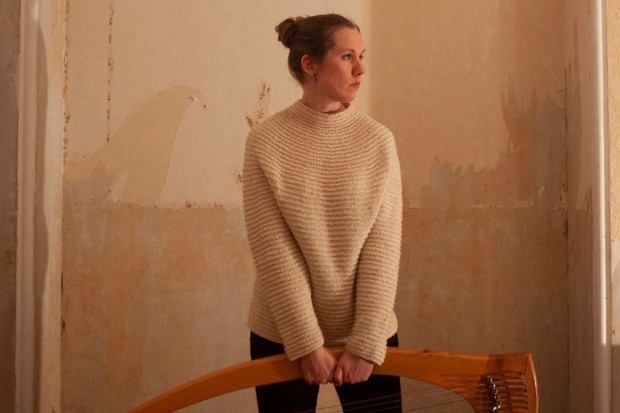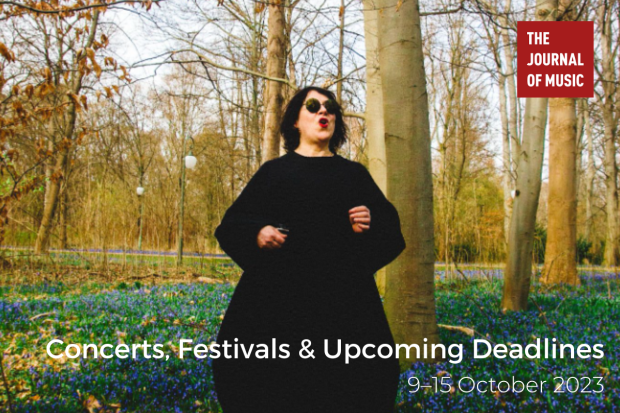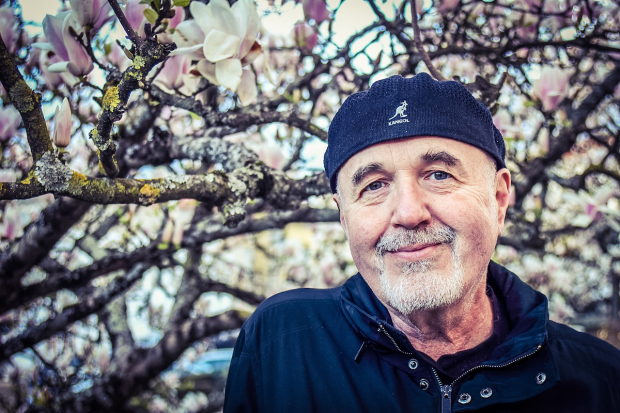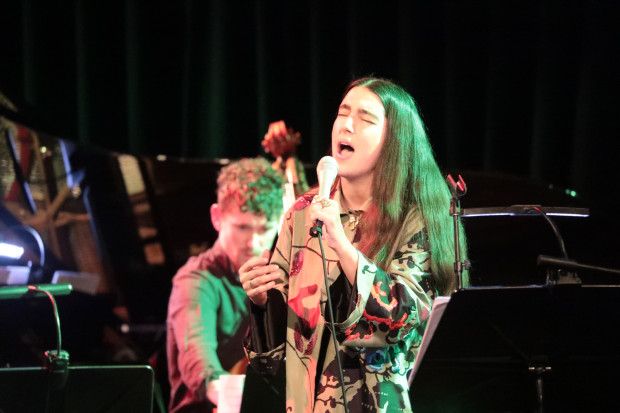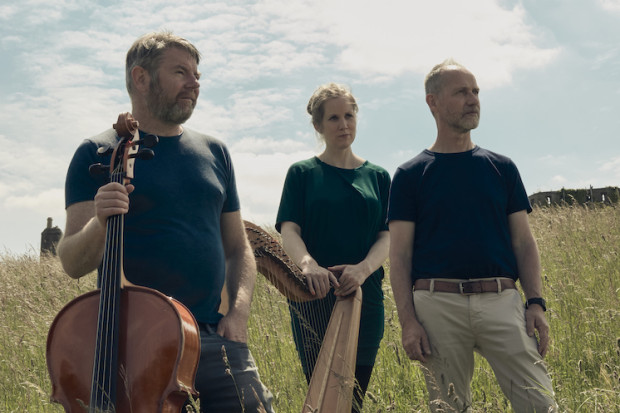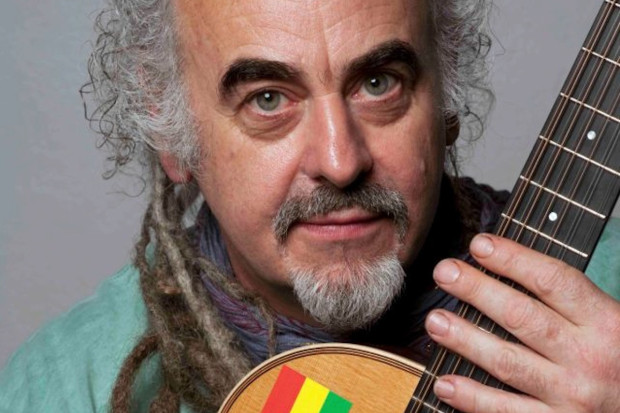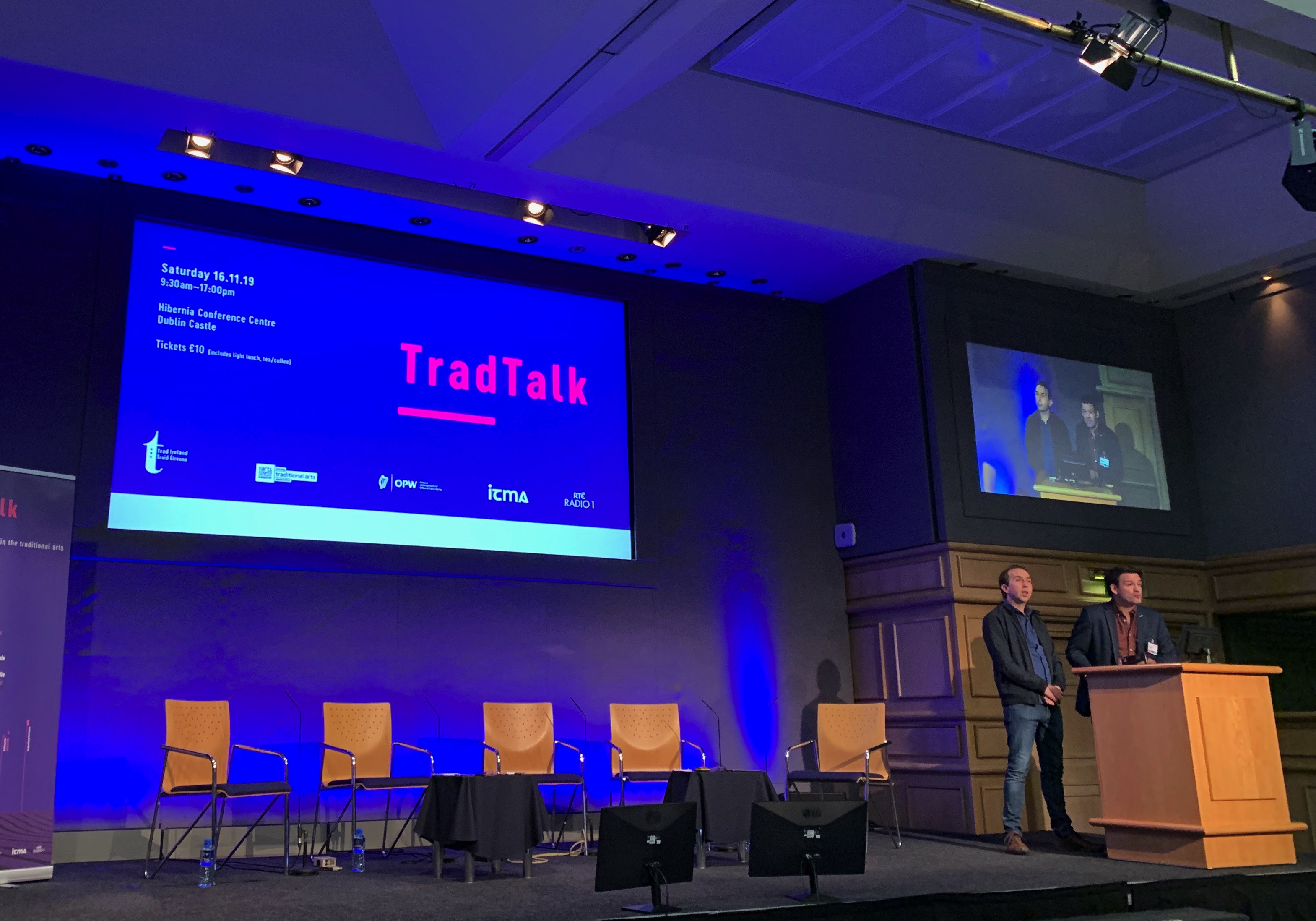
Oisín MacDiarmada and Tristan Rosenstock introducing the TradTalk conference at Dublin Castle.
Are We Ambitious Enough for Irish Traditional Music?
Two years before he died, Mícheál Ó Súilleabháin recalled to me in an interview the surprise he felt in the 1970s when Irish traditional music became so popular across the world, and how surprised he was again when, in each subsequent decade, its popularity seemed to grow even more.
Many might have had the same response. Who could have predicted the range of talents that would emerge from the traditional music scene and the global audiences they would go on to win. Almost seventy years since Comhaltas was established and Séamus Ennis started broadcasting As I Roved Out, sixty years after Mise Éire, fifty-eight years since the Clancy Brothers appeared on the Ed Sullivan Show, four decades since Clannad, the Bothy Band, Planxty and De Dannan released their seminal albums, thirty years since Dervish and Altan were formed, twenty-five years since Riverdance, over fifteen years since Danú won Best Group at the BBC Folk Awards twice, four years since Lankum sang ‘Father Had a Knife’ on Later with Jools Holland, three years since We Banjo 3 topped the Billboard World charts, a year since Beoga played with Ed Sheeran at Glastonbury, and a few months since the Gloaming played Carnegie Hall, and yet each successive generation has underestimated how popular this music can become.
The reasons are cultural. We are reluctant to get carried away, no matter how strong the evidence. The usual Irish response is to shrug modestly. But Ireland’s musical impact is not simply good fortune: it’s the result of a philosophy of knowledge sharing, communal music-making and spontaneity in performance that drives the culture and produces a wide range of talent. How it came to be we may never understand, but it’s real.
Is it permanently secure? Of course not. We always need to work at maintaining it, but the structures that have been put in place, in terms of education, archiving, festivals and summer schools, do seem to be having a regenerative effect, to the extent that each new generation is challenging the previous one in musical ability.
As long as this culture continues to produce highly skilled musicians they will want to make a career out of their playing, and while we are very good at education and transmission from one generation to the next, we are not so great on what happens once these musicians grow up. To date, it has been more about preservation rather than preparation. So what do we need to do for the future?
From the Crossroads Conference to TradTalk
This was one of the themes of the inaugural TradTalk conference which took place last weekend in Dublin Castle. Organised by musicians Tristan Rosenstock and Oisín MacDiarmada, both members of the group Téada and who earlier this year launched their new organisation Trad Ireland, the event seemed to mark the arrival of a new generation. It was attended by a rare cross section of artists and people involved in the traditional arts.
It is sixteen years since there was a similar conference, when Katie Verling organised The Inside Track at Glór in Ennis (see also this 2004 editorial) , and nine years before that we had the Crossroads Conference. But back then the focus was on protecting the culture in the face of the modern world. At TradTalk it was about building on that culture, secure in the knowledge that it is strong today. It’s an ambition that reflects a new confidence. This is a generation that has likely been touring the world since their teenage years and they have seen the popularity of this art form.
In a sense, this new phase of confidence was actually one of the hopes of Martin Hayes when he gave the keynote at The Inside Track in 2003. In an unscripted speech (that was later published in the Journal of Music), he said:
I would like to move [Irish traditional music] onto the plain of just pure music and assume that we now have a universal acceptance that our national identity is both diverse and secure. This is not to say that our music is not reflective of our past or of some essential part of our national psyche. However, we are treating the music as an unruly teenager to whom we are unwilling to offer full independence lest it not adhere to some static notion of what the tradition is. That fear exists because the context that created the music, that nourished it, that even brought the revival movement of this music into existence, all of these things have, in some sense, almost run their course and we now no longer have the cultural environment that created this music. The passing on of the tradition has to involve more than dogma and repetition. It must now also include some of the universals that are part of any artistic journey.
Meeting a need
TradTalk, which was funded by the Arts Council, contained sessions on artistic residencies, funding, dance, cultural democracy, i.e. equality between art forms, new horizons, and perspectives from England, Finland and Brittany. There was also a public interview with Hayes and Steve Cooney, and it was interesting that this time Hayes spoke much more about professional opportunities than musical issues.
I didn’t realise how badly we needed TradTalk until I was there listening. Hearing three dancers (Edwina Guckian, Breandán de Gallaí and Sibéal Davitt with chair Orfhalith Ní Bhriain) discuss their world and the range of expression, from traditional to contemporary, and how ‘everyone is a dancer’, was illuminating. Dr Steven Hadley challenged the very basis of modern arts funding, describing it as being about top-down ‘white, middle-aged, educated men’ telling us what culture is. Jamie McMenemy from Brittany drew an eye-watering comparison between general workers’ rights and musicians’ rights and how the system in France provides support for artists. Úna Monaghan urged traditional artists to apply for residencies and said that they can provide them with creative fuel for years. Jack Talty announced a major new survey of traditional artists which is also being supported by Trad Ireland. Hayes and Cooney gave us beautifully articulated performances of ‘The Britches Full of Stitches’, the ‘Maghera Mountain’ reel and a Connelan harp tune.
So what did we learn? The main thread that I picked up at TradTalk is that we need to be much more ambitious for the future. If there was any evidence needed that as a culture we have not been ambitious enough – despite all the success abroad – it was in one of the statistics that came out: the Arts Council’s funding for the traditional arts is just €1.6m, less than it was in 2010. There is a direct line to be drawn between this and the fact that many of the winners at the last two RTÉ Radio 1 Folk Awards are on a British indie record label. We have never invested properly in ourselves or in new labels like Raelach, Ergodos and Diatribe.
If we agree that our traditional music culture is strong, then we need to build a layer of infrastructure that is going to allow the generations coming up to reach their professional potential. That means developing indie labels that have the resources to invest in the next generation; creating a resource organisation that will support all traditional artists, just as the Contemporary Music Centre and the Improvised Music Company support their scenes; and having a strong national media that continues to support the traditional arts. With these components in place we will see the emergence of more artists, managers and promoters who will further feed into the scene.
How will these initiatives come about? That is down to the traditional arts community and whether it can work together to lobby, campaign, draw investment and provide support for new initiatives. The good news is that TradTalk is set to be an annual event. At long last, traditional artists have a forum where they can truly start to build for the future.
Published on 21 November 2019
Toner Quinn is Editor of the Journal of Music. His new book, What Ireland Can Teach the World About Music, is available here. Toner will be giving a lecture exploring some of the ideas in the book on Saturday 11 May 2024 at 3pm at Farmleigh House in Dublin. For booking, visit https://bit.ly/3x2yCL8.












